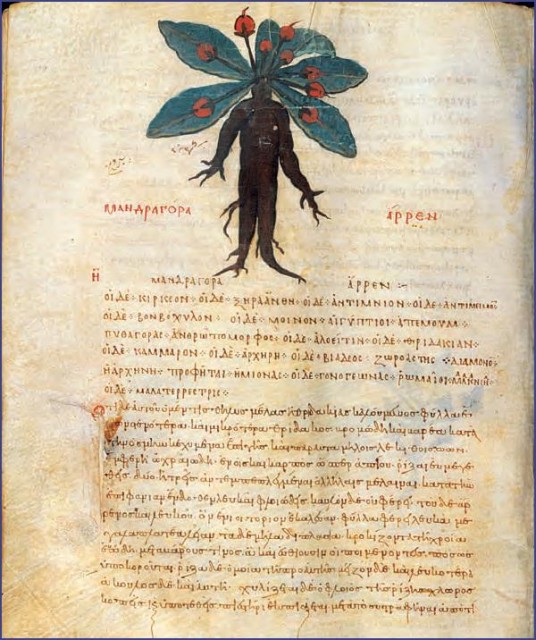Pedanius Dioscorides and His Catalog of Medicinal Plants
So many plants possess medicinal properties, and combinations of ingredients from different plants generate yet more treatments, that a specialist worker preparing medicines or a physician prescribing them could not possibly remember them all. Medical workers need reference books listing recipes for medicines, descriptions of useful plants and their properties, and aids to diagnosis. For almost 1,500 years until the end of the 15th century and the appearance of the first official pharmacopoeias, one book was the standard pharmaceutical text. Translated into many languages and published in many editions, it described approximately 600 plants and plant products as well as a few mineral and animal products, 1,000 medicines made from them, and close to 5,000 therapeutic uses for those medicines.
The book was written in about the year 77 c.e. by a Greek physician Pedanius Dioscorides (ca. 40–ca. 90 c.e.), was entitled De materia medica (About medicinal substances), and was in five volumes. The first volume described oils, gums, and other aromatic substances. Volume 2 was about animal products including milk and honey, as well as fats, cereals, and herbs. Volumes 3 and 4 were about roots and other herbs, and volume 5 dealt with vines and wines and also mineral preparations using mercury, arsenic sulfide, lead acetate, copper oxide, and calcium hydrate. Dioscorides was less interested in botanical descriptions than in the medicinal uses of plants, and he supplied no more descriptive information than someone might need to find the plant.
Some plants were more useful than others. The plant that Dioscorides called panax heraklios, for instance, produced a juice that healed ulcers, coughs, ruptures, convulsions, headaches, stomach pains, toothaches, snakebites, and several other ailments. It improved the eyesight when made into an ointment and rubbed on the eyelids, and the juice mixed with honey was a cure for indigestion. The plant was probably galbanum (Ferula galbaniflora), a member of the carrot family (Apiaceae) that grows in the Middle East.

Dioscorides' strychnos megas kepaios was black nightshade (Solanum nigrum), a European member of the potato family (Solanaceae). It is poisonous, but Dioscorides recommended treating skin ailments by rubbing the affected part with its leaves and treating earaches and indigestion with a liquor made from boiling the leaves. He described the use of sleeping potions made from opium and mandragora (mandrake) as surgical anaesthetics. The following illustration, from a 10th-century edition of De materia medica, shows mandragora.
Mandragora, which is also a member of the Solanaceae, contains hallucinogenic compounds that cause delirium, and for many centuries people believed it had magical powers. Its properties were associated with the fact that its taproot is often divided into two parts a little like human legs. When pulled from the ground, legend had it that the plant screamed and the person uprooting it died. The best way to obtain a root safely was to dig a trench around the plant to expose the upper part of the root, then tie a dog to the exposed root. The dog's owner should then run away. The dog would follow and in doing so pull the root from the ground. That would kill the dog but its owner would survive.
Pedanius Dioscorides was born in about 40 c.e. in the city of Anazarbus (now Anavarza) in the Roman province of Cilicia (now Cukurova, Turkey). He may have studied at Tarsus in Asia Minor and Alexandria, Egypt, where he would have had access to the great library. He became a surgeon in the Roman army during the reign of the emperor Nero, who ruled from 54 c.e. to 68 c.e., and his travels with the army through Greece, Italy, Asia Minor (modern Turkey), and southern France gave him ample opportunity to study the medicinal plants and minerals in the territories he visited.